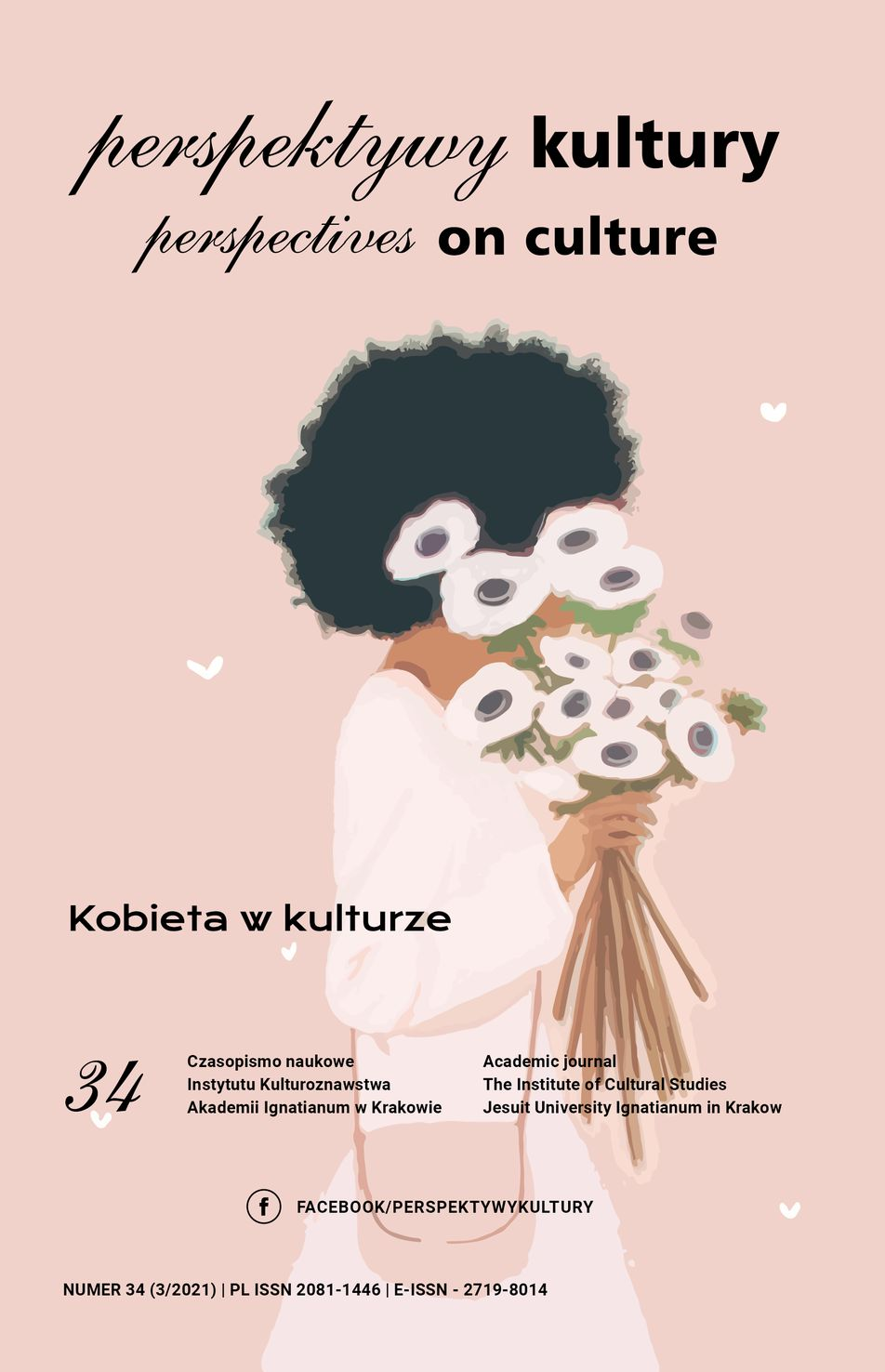Women in Culture. Introduction to the Issue
Abstract
The late 1960s and early 1970s development of liberation discourses (postcolonial, racial, ethnic, gender, environmental, etc.) resulted in them turning not only and not so much into an intellectual strategy, but instead, in their entering culture as social practices, and becoming the main patterns of behavior and models of thinking. 1 In this context, the feminist discourse, 2 which initially developed as a political and legal narrative of the struggle for women’s rights, unfortunately became a world view and even an ideological discourse of opposition and competition between the sexes as it spread. In view of the above, the current cultural situation pursued by feminist activists in terms of gender can be described as a struggle for alpha leadership between an antagonist and a protagonist in the course of a liberation discourse (Gaag, 2014; Carrigan, Connell & Lee, 1985, pp. 551–604; Wood, 2011). Such a struggle is also often described in the terminology of Darwinian natural selection and, therefore, it is realized in social practices as an all-out war between the “oppressors” and the “oppressed,” justified by the criteria of biological (non)utility in nature or society.
References
Altinay, A.G., & Pető, A. (eds.) (2016). Gendered Wars, Gendered Memories: Feminist Conversations on War, Genocide and Political Violence. Routledge. Retrieved from: https://doi.org/10.4324/9781315584225.
Bacigalupo, A.M. (2003). Mapuche Shamanic Bodies and the Chilean State: Polemic Gendered Representation and Indigenous Responses. In
A.J. Aldama, Violence and the Body: Race, Gender, and the State. Blooming- ton Indiana: Indiana University Press, 322–343.
Bogoraz, V.G. (1904–1909). The Chukchee. Leiden: E.J. Brill / New York: G.E. Stechert. [= Memoir of the American Museum of Natural History, Bd. 11, Publications of the Jesup North Pacific Expedition (hrg. von Franz Boas), Bd. 7: Teil 1: Material Culture (1904), Teil 2: Religion (1907), Teil 3: Social Organization (1909)].
Bogoraz, V.G. (1910). K psihologii shamanstva u narodov Severo-vostochnoj
Azii. Jetnograficheskoe obozrenie, vol. 84–85, 1–2, 9–14, 1–34.
Carrigan, T., Connell, B., & Lee, J. (1985). Toward a new sociology of mascu- linity. Theory & Society 14(5), 551–604.
Enloe, C. (1983). Does Khaki Become You? The Militarization of Women’s Lives. London: Pluto Press.
Evans, E., & Chamberlain, P. (July 2015). Critical Waves: Exploring Feminist Identity, Discourse and Praxis in Western Feminism. Social Movement Stu- dies, 14(4), 396–409.
Gaag, van der, N. (2014). Feminism and Men. London: Zed Books. Hartmann, J., Klesse, Chr., Wagenknecht, P., Fritzsche, B., & Hackmann, K. (eds.) (2007). Heteronormativität. Empirische Studie zu Geschlecht, Sexua- lität und Macht. Wiesbaden: VS Verlag für Sozialwissenschaften.
Hernes, H., Kuehnast, K., & de Jonge Oudraat, Ch. (Eds.) (2011). Women and War: Power and Protection in the 21st Century. Washington, DC: United States Institute of Peace.
Ingraham, Chr. (1994). The Heterosexual Imaginary: Feminist Sociology and Theories of Gender. Sociological Theory, 12(2), 203–219.
Lugones, M. (2007). Heterosexualism and the Colonial/ Modern Gender System. Hypatia, 22(1), 196–198.
Nanda, S. (1990). Neither Man nor Woman: the Hijras of India. Belmont, CA: Wadsworth Pub.
Nikolayeva, Zh. i Troitskiy, S. (2018). An Introduction to Russian and Inter- national Studies of Cultural Exclusion Zones. An Analytical Overview of Recent Concepts. Rivista di Estetica, 67, anno LVIII, 3–19.
Pospelova, O.V. i Karagapolova, I.V. (2012). Transgendernost’ i geteronorma- tivnost’. Arhangel’sk: Rakurs.
Richards, Chr., Bouman, W.P., & Barker, M.-J. (eds.) (2017). Genderqueer and Non-Binary Genders. London: Palgrave Macmillan.
Sjoberg, L., & Via, S. (eds.) (2010). Gender, War and Militarism: Feminist Per- spectives. Santa Barbara, CA: Praeger Security International.
Troitskiy, S.A. (2015). Problema terminologicheskoj tochnosti pri izuchenii zon kul’turnogo otchuzhdenija. Novoe Literaturnoe Obozrenie, 133, 72–73 (66–75).
Troitskiy, S. (2018). The Problem of Terminological Precision in Studies on Cultural Exclusion Zones. Rivista di Estetica, 67, anno LVIII, 165–180.
Weinstock, J.A. (1997). Virus Culture. Studies in Popular Culture, 20(1), 83–97. Wood, J.T. (2011). The rhetorical shaping of gender: men’s movements in the United States. In J.T. Wood (ed.), Gendered lives: communication, gen- der, and culture. Australia Boston, Massachusetts: Wadsworth Cengage Learning.
Copyright (c) 2021 Jesuit University Ignatianum in Krakow

This work is licensed under a Creative Commons Attribution-NoDerivatives 4.0 International License.
Autor, zgłaszając swój artykuł, wyraża zgodę na korzystanie przez Wydawnictwo Uniwersystet Ignatianum z utworu na następujących polach eksploatacji:
- utrwalania utworu w formie papierowej, a także na nośniku cyfrowym lub magnetycznym;
- zwielokrotnienia utworu dowolną techniką, bez ograniczenia ilości wydań i liczby egzemplarzy;
- rozpowszechniania utworu i jego zwielokrotnionych egzemplarzy na jakimkolwiek nośniku, w tym wprowadzenia do obrotu, sprzedaży, użyczenia, najmu;
- wprowadzenia utworu do pamięci komputera;
- rozpowszechniania utworu w sieciach informatycznych, w tym w sieci Internet;
- publicznego wykonania, wystawienia, wyświetlenia, odtworzenia oraz nadawania i reemitowania, a także publicznego udostępniania utworu w taki sposób, aby każdy mógł mieć do niego dostęp w miejscu i czasie przez siebie wybranym.
Wydawca zobowiązuje się szanować osobiste prawa autorskie do utworu.





